Destination: Virginia Beach
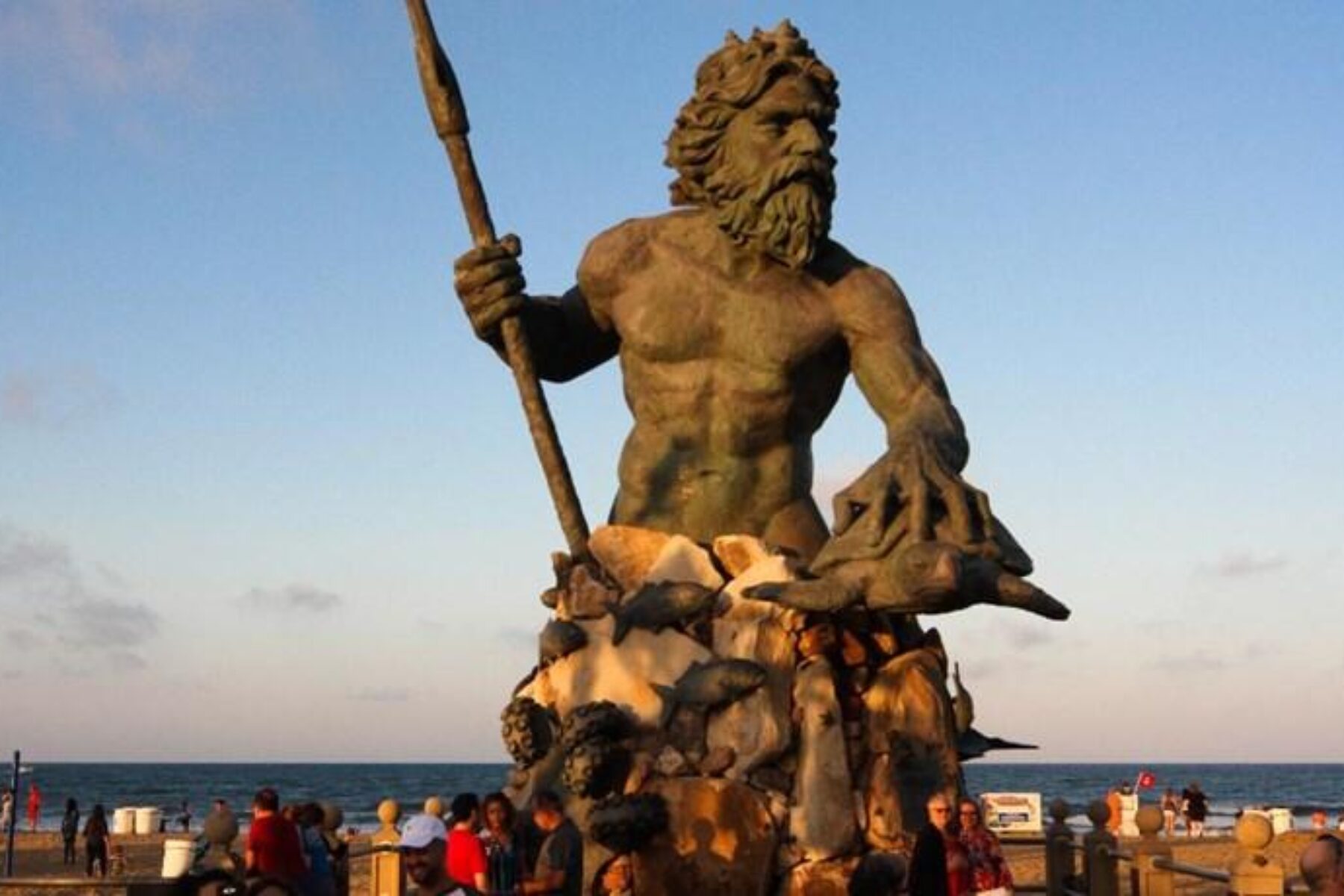
This destination feature highlights the sights and wonders of four trails around Virginia Beach: the Cape Henry Trail, Elizabeth River Trail, Norfolk Avenue Trail and Virginia Beach Boardwalk. Working together to help create a complete cultural experience, these trails are also part of the proposed Beaches to Bluegrass Trail System, which could one day span all of southern Virginia. Enjoy!
Cape Henry Trail
Following the route of a long-dismantled passenger railway (both an electrified trolley and later a gas-powered one), the Cape Henry Trail starts in a bustling area of Virginia Beach before quickly plunging into the tranquility of First Landing State Park—where Virginia Company colonists first set foot in 1607 before establishing themselves at nearby Jamestown.
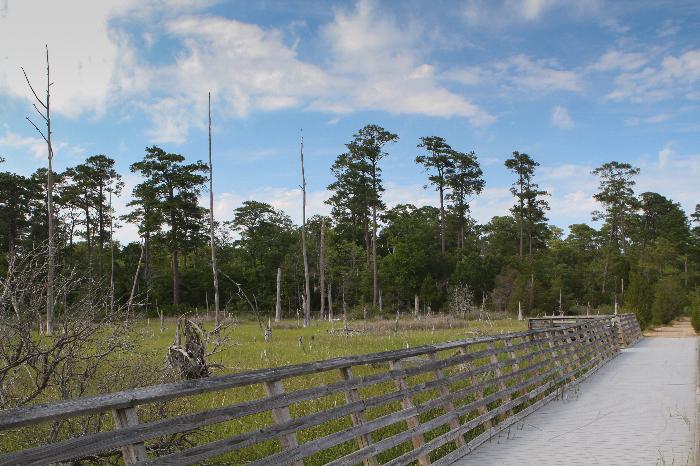
The longest of nine trails that crisscross the state park, it’s the only one to allow biking. The trail takes you through forest and cypress swamps, across a salt marsh and along the edge of a lake before terminating at a small white sand bay beach.
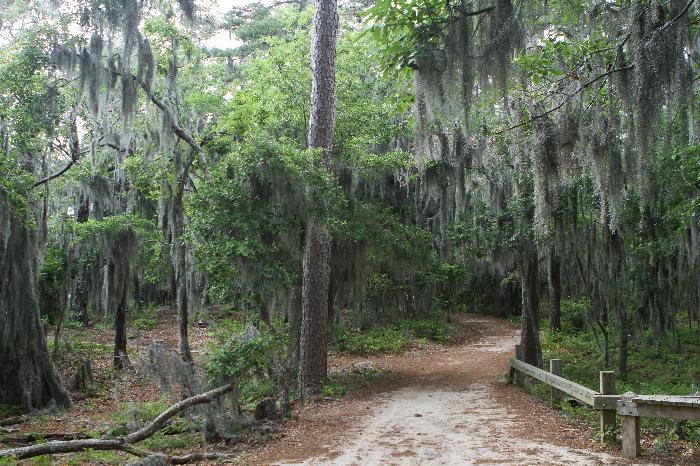
Where it follows the old trolley line outside the state park, the rail-trail is paved and separated from the roadway; it deviates from the old railway within the park where it’s mostly hard-packed earth, fallen pine needles and the occasional patch of soft sand. Mountain bikes and hybrids can manage the trail with ease.
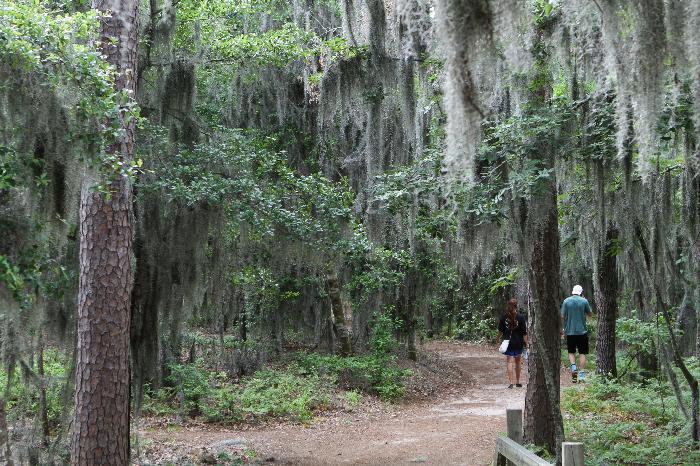
Spanish moss blankets the trees in sections. The trail has mild ups and downs but averages out to nearly flat.
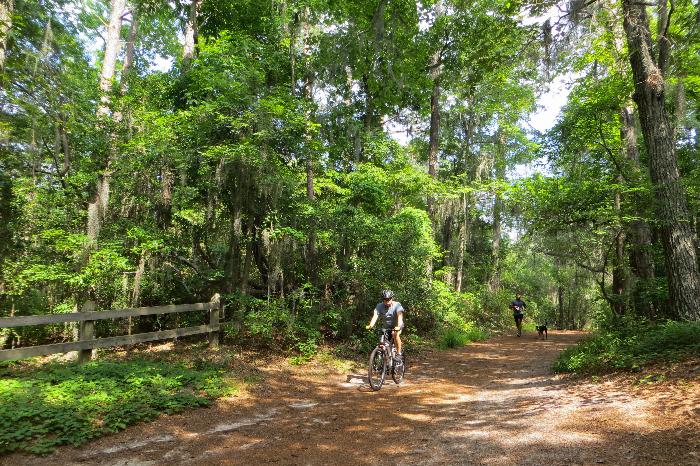
The trail connects to several of the shorter hiking-only trails within the park, so you can easily hop off your bike and explore more of the surroundings at a slower pace.
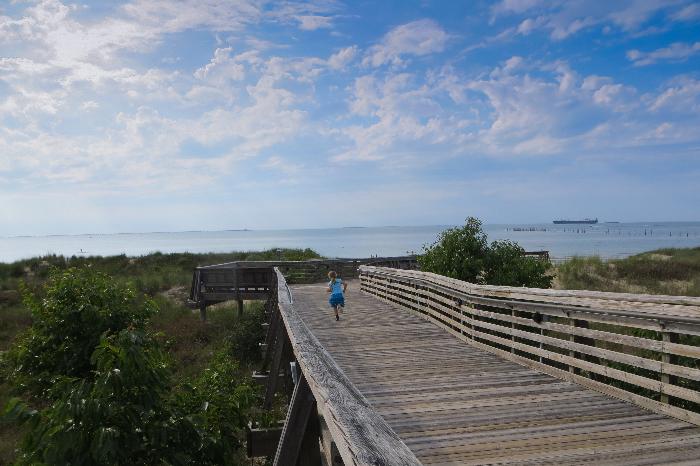
First Landing State Park provides the perfect setting for a bike and beach adventure: A vast beach fronting the Atlantic Ocean is easily accessible from the rail-trail. Tucked away behind the bulk of Cape Henry, the waves are robbed of most of their energy, making the gently lapping wavelets great for kids.
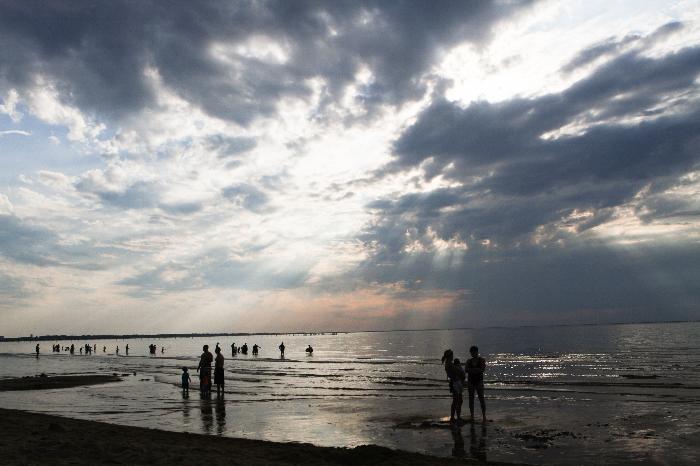
Only 7 miles from the more popular boardwalk beach to the south, First Landing’s beaches provide a quieter, more mellow experience.
Elizabeth River Trail
Starting from the southern terminus at Harbor Park stadium in Norfolk, Virginia, the Elizabeth River Trail follows its namesake around the south side of the city along several former railroad rights of way. A major construction project slated to be finished in late 2016 has closed off a portion of the trail, but the alternative Ghent Loop offers a great way to see more of the city and is mostly along trails, with only a short on-road or sidewalk portion. Almost entirely paved, the trail is mostly flat.
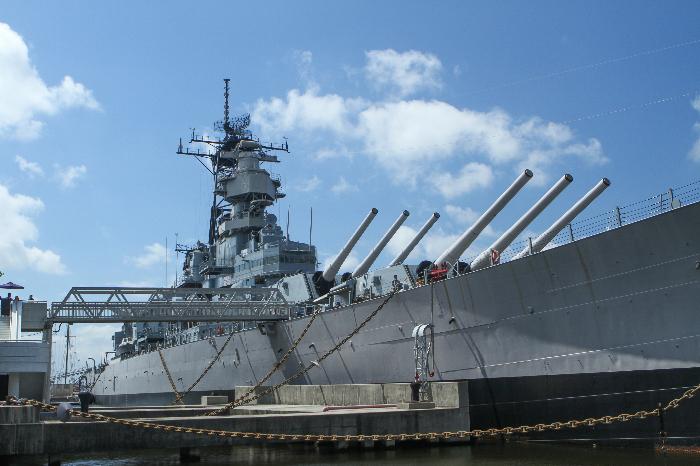
One of the largest and fastest battleships ever constructed, the USS Wisconsin was launched in 1943 and permanently decommissioned in 1991, having served in the Pacific theater of World War II, the Korean War and Operation Desert Storm. She came to rest in Norfolk in 2000, nestled into a berth at the downtown waterfront skirted by the Elizabeth River Trail.
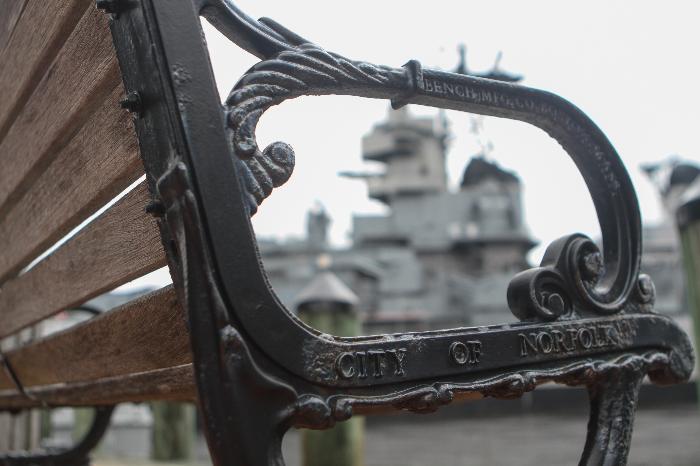
An Iowa-class battleship, the USS Wisconsin is slightly more than 887 feet long and 108 feet wide, and displaces 45,000 tons when empty. Open for tours, it’s a major draw of the adjacent maritime museum, Nauticus. Like a railbanked trail, the Wisconsin is maintained in a state of general readiness should she ever be needed again by her country.
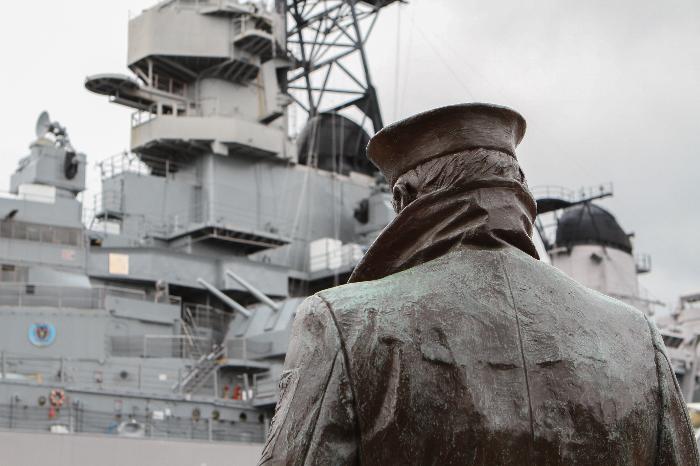
A U.S. Navy bluejacket with hands stuffed in his peacoat keeps eternal watch over the Wisconsin. The Lone Sailor is an exact replica of the original statue found at the Navy Memorial in Washington, D.C.

Just steps from the USS Wisconsin, the trail goes through an Oriental garden at Freemason Harbor. Featuring a pond with fountain and colorful koi, the garden is a peaceful place to rest.

Perfectly illustrating Norfolk’s fusion of historical industry and modern flair, the tea garden’s central pagoda was built in 1989 on and around the pillars that previously supported a 500,000-gallon molasses storage tank built in 1918 by the Southgate Molasses Company.
RELATED: Destination Missouri: Katy Trail State Park
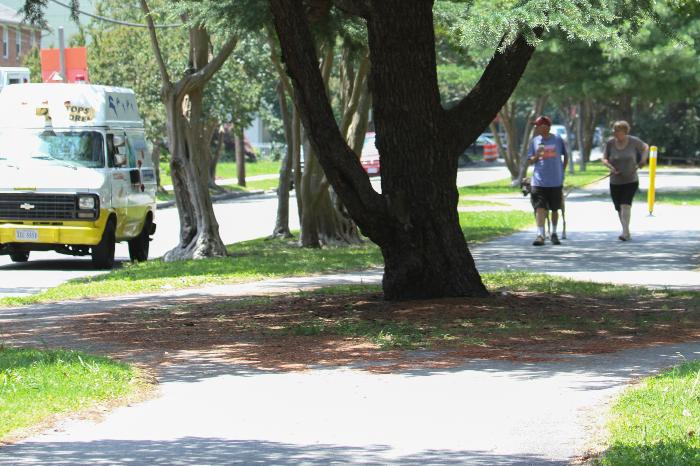
While a section of the trail is closed for construction, the Ghent Loop detour provides an alternate route through the city. Mostly protected bikeways, there are a few short stretches requiring either on-road or sidewalk travel. Here, the path goes down the center of a 35-foot-wide median on Redgate Avenue.
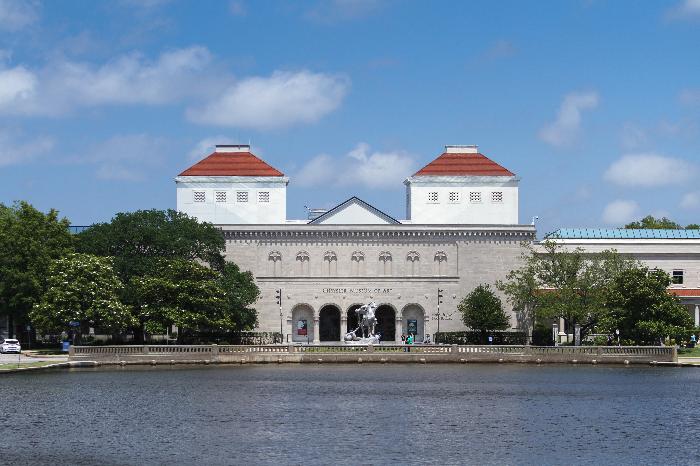
A pedestrian/bike bridge crosses The Hague, a Y-shaped inlet of the Elizabeth River anchored by the Chrysler Museum of Art.

Like many bridges around the globe, this one over The Hague is covered with locks symbolizing lovers’ commitment to each other. Many have dates inscribed and go back to at least 1994, the earliest one I could find.
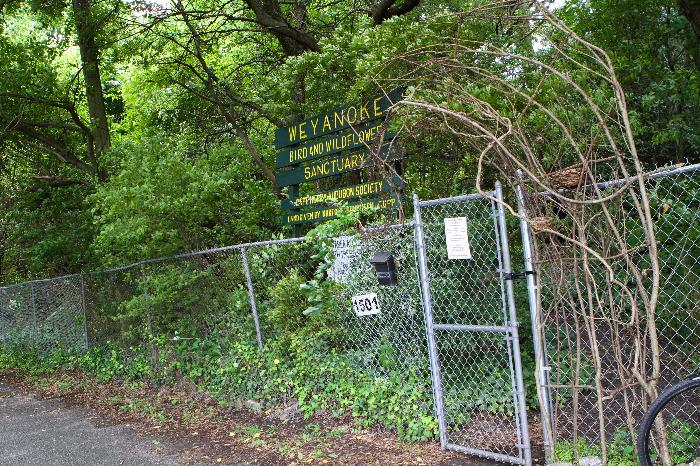
The blink-and-you’ll-miss-it entrance to the Weyanoke Bird and Wildlife Sanctuary. Once owned by the Norfolk Southern Corporation, the land is adjacent to their massive rail yard and was donated by the rail company in 1979 to the Cape Henry Audubon Society. Note that bikes are not allowed inside.
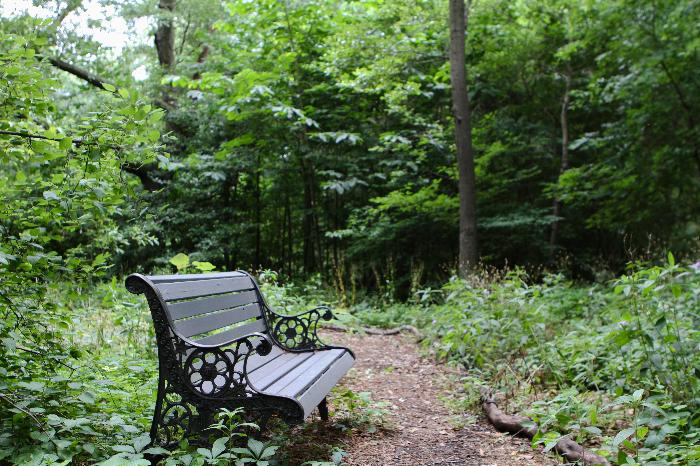
Mostly untamed wilderness, benches like this one are rare in Weyanoke. Trails, some barely wider than a sneaker, wend throughout the 8-acre refuge.
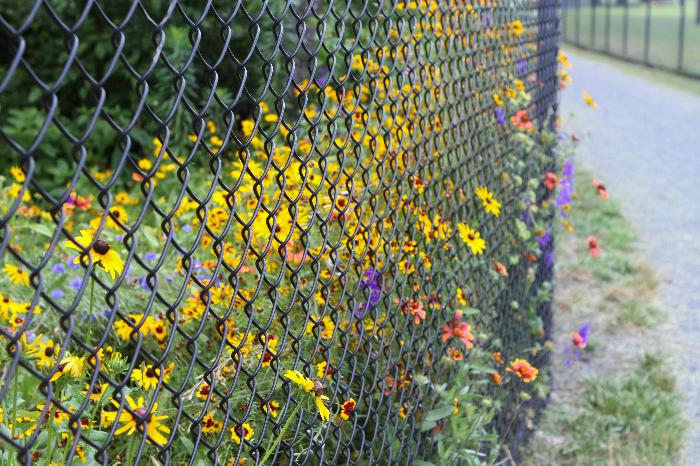
Wildflowers seemingly try to escape from the fenced preserve. The trail transitions to crushed gravel for a short distance here.
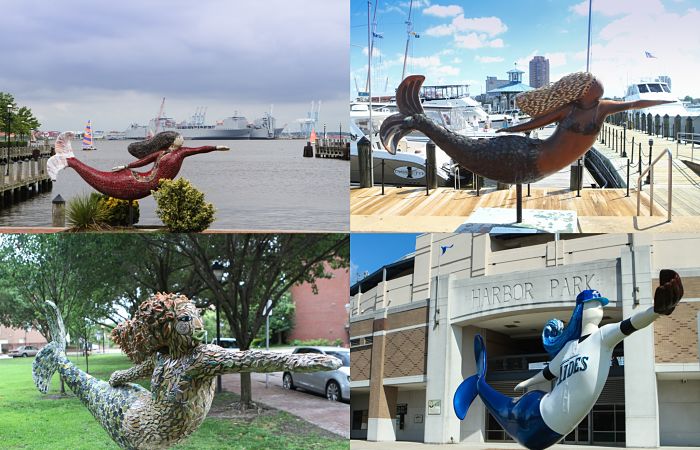
Like Chicago’s cows or D.C.’s pandas, individually decorated mermaid statues can be found throughout Norfolk. Even the Norfolk Tides, a farm team of the Baltimore Orioles, got in on the act with the mermaid diving—ha!—for a catch outside their home at Harbor Park stadium.
Norfolk Avenue Trail and Virginia Beach Boardwalk
The Norfolk Avenue Trail, paralleling its namesake roadway for 1.3 miles, offers a wide, pleasant east-west route through Virginia Beach. Evidence of its rail history is clear; at the end of the line you can see the tracks that once defined the path.
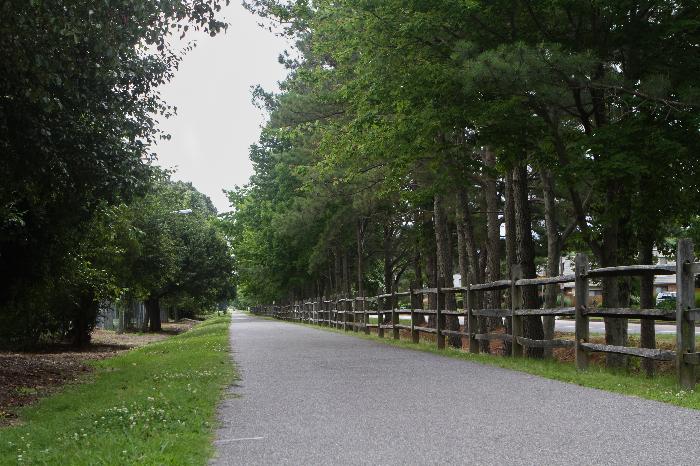
Straight, broad and flat, the paved Norfolk Avenue Trail is everything you expect a rail-trail to be. Alas, it terminates abruptly at a dead end (at disused railroad tracks) on its western side, but its eastern end is only two short blocks from Virginia Beach’s famous beach and boardwalk.
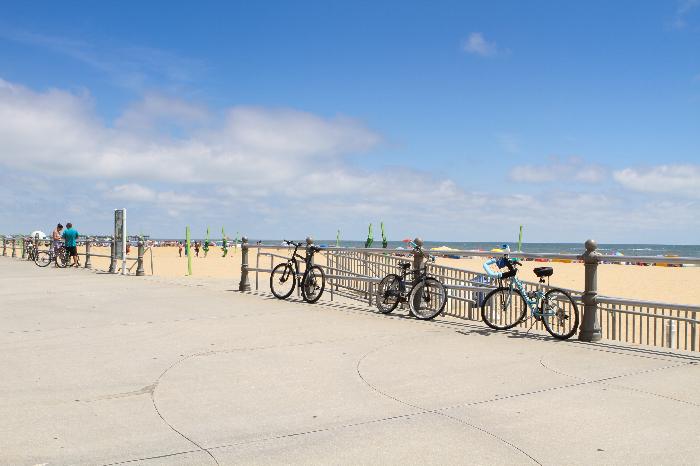
A trip to Virginia Beach (the most populous city in Virginia) wouldn’t be complete without a trip to Virginia Beach (the longest pleasure beach in the world). More than 2.5 miles long, the boardwalk runs along shops, eateries, live music venues and hotels on one side, and the endless expanse of the Atlantic Ocean on the other.
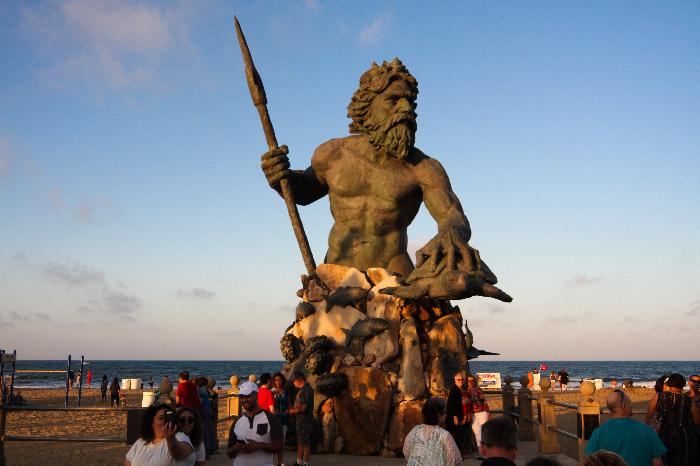
This statue of Neptune, located along the northern third of the boardwalk, is a crowd favorite.
All photos and captions by Scott Stark/Stark Images

Donate
Everyone deserves access to safe ways to walk, bike, and be active outdoors.
